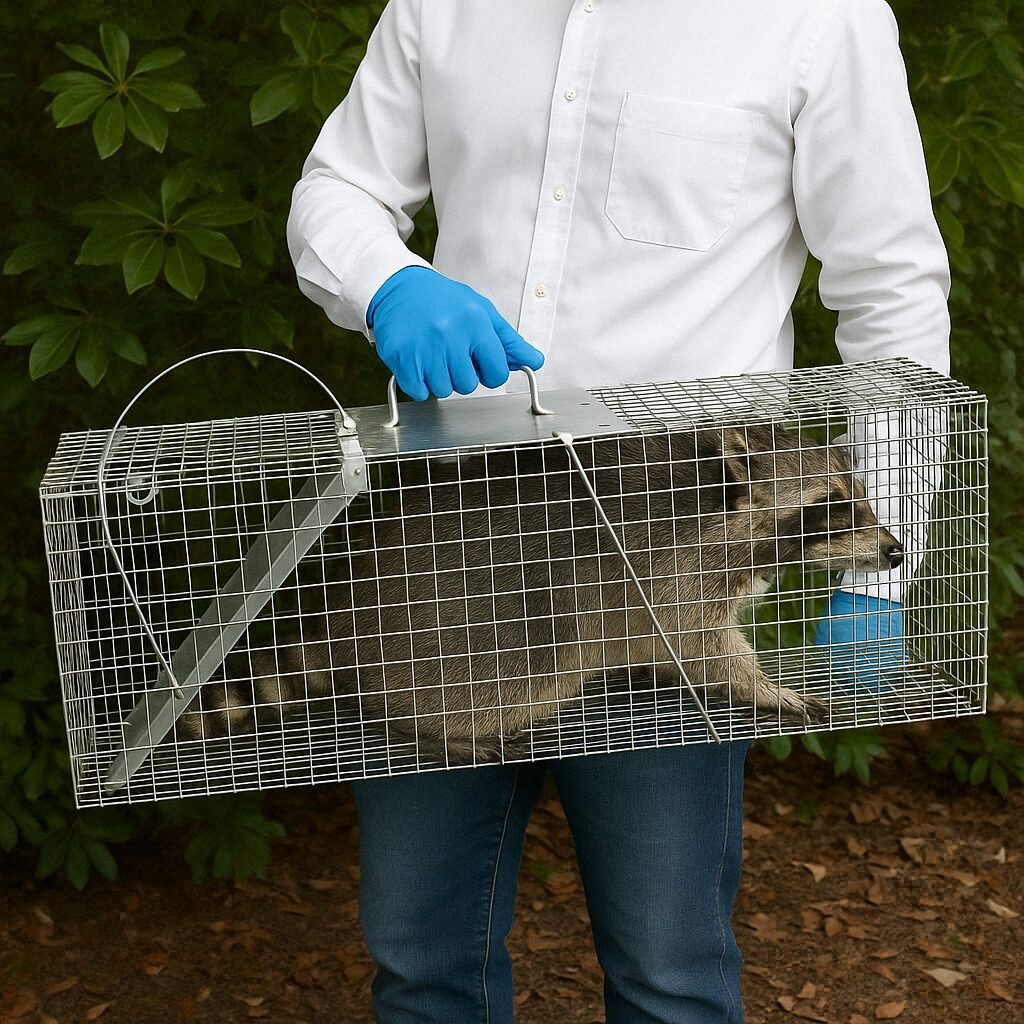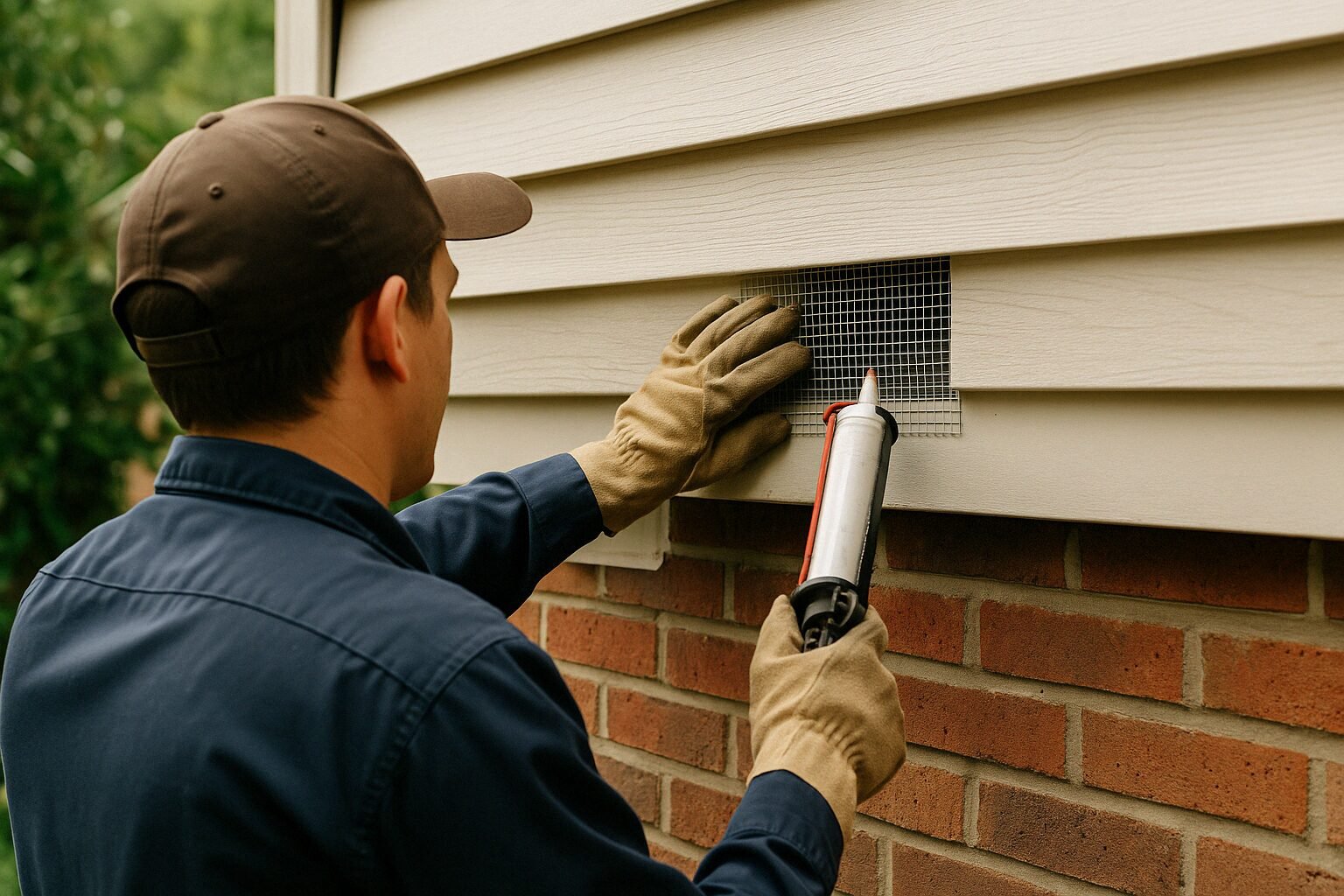Protect your home from unwanted wildlife intruders. Touchdown Pest Control provides humane and effective wildlife removal Los Angeles, handling raccoons, squirrels, opossums, and more. Call now to schedule fast Los Angeles wildlife control services near you.
Raccoons in the attic? Squirrels in your walls? Opossums in the garage? Unwanted wildlife can cause property damage, health risks, and sleepless nights. Touchdown Pest Control offers humane wildlife removal in Los Angeles designed to safely remove animals and prevent them from returning.
Our experienced technicians locate entry points, remove nuisance animals, and seal access areas to keep your home protected. We use safe and eco-friendly trapping and exclusion techniques that comply with all local wildlife laws. Don’t wait until the damage is done—get professional Los Angeles wildlife control now.
Hear scratching in the attic or see droppings around your home? Contact us today for expert wildlife removal in Los Angeles—fast, safe, and reliable.
Wild animals seek shelter in warm, quiet places—like attics, crawlspaces, chimneys, and basements. To prevent future invasions, it’s essential to seal entry points and eliminate attractants.
Keep trash cans tightly closed, trim tree branches away from your roof, and avoid feeding pets outdoors. Our team performs full property inspections to identify vulnerabilities and installs barriers like chimney caps and vent screens.
Wildlife removal in Los Angeles is best left to professionals. Attempting DIY trapping can be dangerous and ineffective. Trust Touchdown Pest Control for safe, legal, and long-lasting Los Angeles wildlife control services tailored to your property.



Unwanted wildlife such as raccoons, squirrels, and opossums can cause serious damage when they make your home their own. Understanding their behavior is key to preventing future intrusions:
DIY wildlife removal can be risky and ineffective. Touchdown Pest Control provides humane and professional Los Angeles wildlife control services that protect your property and your health:
Common wildlife intruders include raccoons, squirrels, and opossums. These animals seek shelter in attics, crawlspaces, chimneys, and basements, especially during colder months, and can cause property damage and health risks if not removed properly.
Signs of wildlife activity include scratching noises in walls or ceilings, droppings near entry points, damaged vents or soffits, and unpleasant odors. Early detection is key to preventing extensive damage and larger infestations.
Wild animals enter homes looking for warm, safe places to nest and access to food. Unsealed trash bins, pet food left outside, and tree branches touching roofs all make homes more inviting to wildlife.
DIY wildlife removal can be dangerous and often ineffective. Handling wild animals without proper equipment or training can result in injuries, legal issues, and the animal returning. Professional wildlife removal in Los Angeles ensures safe, humane, and legal removal.
Touchdown Pest Control uses humane trapping methods, locates and seals animal entry points, and installs preventive barriers like vent screens and chimney caps. Our approach protects both your home and the wildlife, ensuring a safe, lasting solution.
Prevent wildlife infestations by keeping trash cans sealed, trimming tree branches away from the roof, securing pet food indoors, and sealing entry points around your home. Regular inspections from professionals like Touchdown Pest Control further strengthen protection.
Touchdown Pest Control uses humane trapping methods, locates and seals animal entry points, and installs preventive barriers like vent screens and chimney caps. Our approach protects both your home and the wildlife, ensuring a safe, lasting solution.
Anaheim – Anaheim Hills – Corona – Covina – Eastvale – Fontana – Fullerton – Glendora – Irvine – Long Beach – Los Angeles – Monrovia – Moreno Valley – Norco – Ontario – Orange – Orange County – Pasadena – Reseda – Riverside – Santa Ana – Van Nuys – Whittier – Woodland Hills
Touchdown Pest Control
We firmly believe that the internet should be available and accessible to anyone, and are committed to providing a website that is accessible to the widest possible audience, regardless of circumstance and ability.
To fulfill this, we aim to adhere as strictly as possible to the World Wide Web Consortium’s (W3C) Web Content Accessibility Guidelines 2.1 (WCAG 2.1) at the AA level. These guidelines explain how to make web content accessible to people with a wide array of disabilities. Complying with those guidelines helps us ensure that the website is accessible to all people: blind people, people with motor impairments, visual impairment, cognitive disabilities, and more.
This website utilizes various technologies that are meant to make it as accessible as possible at all times. We utilize an accessibility interface that allows persons with specific disabilities to adjust the website’s UI (user interface) and design it to their personal needs.
Additionally, the website utilizes an AI-based application that runs in the background and optimizes its accessibility level constantly. This application remediates the website’s HTML, adapts Its functionality and behavior for screen-readers used by the blind users, and for keyboard functions used by individuals with motor impairments.
If you’ve found a malfunction or have ideas for improvement, we’ll be happy to hear from you. You can reach out to the website’s operators by using the following email
Our website implements the ARIA attributes (Accessible Rich Internet Applications) technique, alongside various different behavioral changes, to ensure blind users visiting with screen-readers are able to read, comprehend, and enjoy the website’s functions. As soon as a user with a screen-reader enters your site, they immediately receive a prompt to enter the Screen-Reader Profile so they can browse and operate your site effectively. Here’s how our website covers some of the most important screen-reader requirements, alongside console screenshots of code examples:
Screen-reader optimization: we run a background process that learns the website’s components from top to bottom, to ensure ongoing compliance even when updating the website. In this process, we provide screen-readers with meaningful data using the ARIA set of attributes. For example, we provide accurate form labels; descriptions for actionable icons (social media icons, search icons, cart icons, etc.); validation guidance for form inputs; element roles such as buttons, menus, modal dialogues (popups), and others. Additionally, the background process scans all the website’s images and provides an accurate and meaningful image-object-recognition-based description as an ALT (alternate text) tag for images that are not described. It will also extract texts that are embedded within the image, using an OCR (optical character recognition) technology. To turn on screen-reader adjustments at any time, users need only to press the Alt+1 keyboard combination. Screen-reader users also get automatic announcements to turn the Screen-reader mode on as soon as they enter the website.
These adjustments are compatible with all popular screen readers, including JAWS and NVDA.
Keyboard navigation optimization: The background process also adjusts the website’s HTML, and adds various behaviors using JavaScript code to make the website operable by the keyboard. This includes the ability to navigate the website using the Tab and Shift+Tab keys, operate dropdowns with the arrow keys, close them with Esc, trigger buttons and links using the Enter key, navigate between radio and checkbox elements using the arrow keys, and fill them in with the Spacebar or Enter key.Additionally, keyboard users will find quick-navigation and content-skip menus, available at any time by clicking Alt+1, or as the first elements of the site while navigating with the keyboard. The background process also handles triggered popups by moving the keyboard focus towards them as soon as they appear, and not allow the focus drift outside it.
Users can also use shortcuts such as “M” (menus), “H” (headings), “F” (forms), “B” (buttons), and “G” (graphics) to jump to specific elements.
We aim to support the widest array of browsers and assistive technologies as possible, so our users can choose the best fitting tools for them, with as few limitations as possible. Therefore, we have worked very hard to be able to support all major systems that comprise over 95% of the user market share including Google Chrome, Mozilla Firefox, Apple Safari, Opera and Microsoft Edge, JAWS and NVDA (screen readers).
Despite our very best efforts to allow anybody to adjust the website to their needs. There may still be pages or sections that are not fully accessible, are in the process of becoming accessible, or are lacking an adequate technological solution to make them accessible. Still, we are continually improving our accessibility, adding, updating and improving its options and features, and developing and adopting new technologies. All this is meant to reach the optimal level of accessibility, following technological advancements. For any assistance, please reach out to